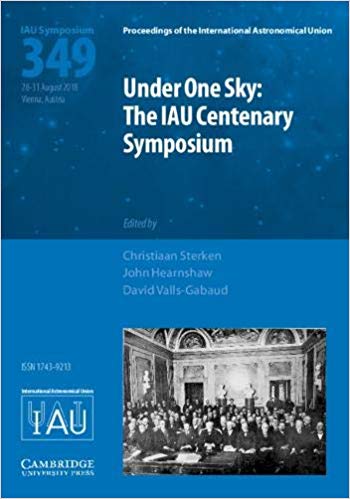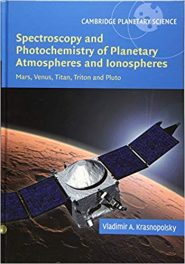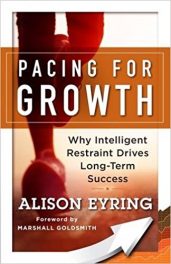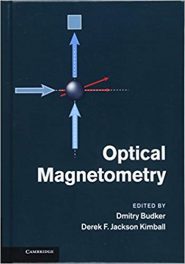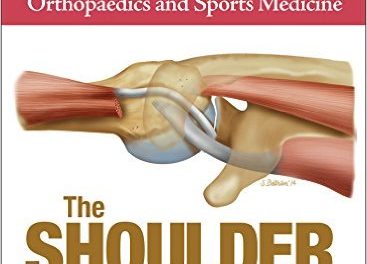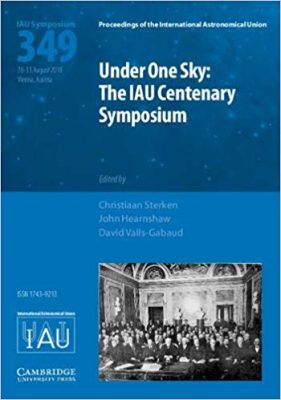 Editors: Christiaan Sterken, John Hearnshaw, and David Valls-Gabaud
Editors: Christiaan Sterken, John Hearnshaw, and David Valls-Gabaud
Publisher: Cambridge University Press – 542 pages
Book Review by: Sonu Chandiram
Over 3,000 astronomers were to have attended this 100th annual gathering of astronomers from around the world, the authors write in the Preface to this book. But how many attended is not indicated. The fact that the IAU has lasted for a century is significant, and that this Union has decided what it’s going to do in the next decade is a strong sign of its purposefulness.
The IAU is 100 years old and has accomplished much, as you will find, discussed in this book. It has grown from a ‘club’ of some 200 people in 1919 to some 13,500 members now. In this symposium held in August 2018, this organization also approved its Strategic Plan 2020-30 that spells out what this Union is going to do, moving forward.
The IAU was formed in July 1919 with its purpose: “to safeguard and promote the science of astronomy in all its aspects through international cooperation.” What it has accomplished since 1919 is covered in this book and discussed in detail within its over 540 pages. We list below the titles of its 10 Parts (its list of chapters of four and a half pages was too long to reproduce here):
- Part I – Centenary Session (Plenary Presentations)
- Part II – Reminiscences from Past Presidents
- Part III – Reminiscences from Past General Secretaries
- Part IV – The IAU and Its History
- Part V- The IAU and Its Relation to Diverse Geographical Regions of the World
- Part VI – IAU Structures and Organization
- Part VII – Astronomical Publishing
- Part VIII – The International School for Young Astronomers
- Part IX – Some Miscellaneous Topics in Astronomical History
- Part X – The IAU in the Future
During its earliest years, the IAU set criteria for standards and classification schemes used in astronomy. Today it is engaged in various activities in education, outreach, research, training of astronomy teachers in schools, and promoting astronomy through the media as a great career choice for youngsters, particularly for women, and emphasizing equity, diversity, and inclusivity.
The field of astronomy like most other sciences grows with promotion and creating excitement for what promises it holds. It is a vast universe we live in, and its size, I would venture to say, is unfathomable, and probably cannot be visualized. But that is the nature of science, and it is the prospect of making new discoveries that excites human beings.
Young people are naturally curious, and one way they decide to pursue a career is to open them to the possibilities of new discoveries that can improve peoples’ lives. Let us take a look at how members of the IAU have enabled their profession to grow, by browsing through the chapter entitled The Future of the International Schools for Young Astronomers (ISYA) authored by Itziar Aretxaga, found on page 452 within Part 8.
Below we reproduce for you the Abstract of this chapter and portions of its Introduction, and the titles of its other topics:
Abstract: The 5-decade old ISYA program (begun in 1967) is evaluated in the context of the experience gathered in the field: 41 schools organized in 27 countries with a total of more than 1,400 students to date (2019). In the new era of fast internet connectivity, social media, virtual networks, big data and machine learning, the value of face-to-face graduate schools for regions with limited up-to-date astrophysics research is presented, together with the plan to develop ISYA programs into the next decade.
- Introduction: The ISYA program, established in 1967 by the IAU, organizes graduate-level three-week-long intensive schools in countries where astronomy is not sufficiently developed, or in countries that can at as poles for those around them
- The need for face-to-face tuition, some personal perspectives
- Relationship to other IAU sponsored schools
- Plans for ISYAs in the near future
- Strategies for the middle to long term
- Proposed complementary initiatives
- Discussion
- References
The International Astronomical Union (IAU) is a wonderful example of cooperation among countries for the good of mankind, and the fact that it has existed for a century, helped thousands of people, furthered education, growth, learning, research and teaching within the profession of astronomy is really laudable.
This book on the history of the IAU and its plans going forward is an excellent example for other groups of professionals besides astronomers (and those in allied fields) of how people in different professions all over world can come together for the good of everyone and this world we live in.
The three principal authors – Christiaan Sterken, John Hearnshaw, and David Valls-Gabaud – and the others, who contributed content, have done an excellent job with this important and very valuable book.
Editors:
Christiaan Sterken is affiliated with the University of Brussels in Brussels, Belgium.
John Hearnshaw is affiliated with the University of Canterbury in Canterbury, New Zealand.
David Valls-Gabaud is affiliated with Observatoire de Paris in Paris, France.

